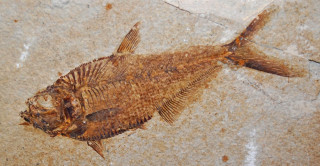Paleontology

Fun Fossil Facts
We have world-class vertebrate fossil collections from the Late Cretaceous of southern Utah (Kaiparowits, Wahweap, and Straight Cliffs formations) and the Upper Jurassic Morrison Formation of central Utah, including the largest collection anywhere, from the world-famous Cleveland-Lloyd Dinosaur Quarry. Other important vertebrate collections include the Pleistocene of Utah, early collections from the Pliocene Hagerman Fossil Horse Quarry, the Oligocene of the southern unit of Badlands National Park in South Dakota, and the Eocene of the Uinta Basin.
Our paleobotanical holdings include large collections from the Early Eocene Green River Formation of Utah and Wyoming, and an excellent collection of Triassic specimens from the Colorado Plateau collected by world-renowned paleobotanist Dr. Sid Ash.
Utah Discovery
Meet Lythronax argestes
A remarkable new species of tyrannosaur has been unearthed in Grand Staircase-Escalante National Monument (GSENM), southern Utah. The huge carnivore inhabited Laramidia, a landmass formed on the western coast of a shallow sea that flooded the central region of North America, isolating western and eastern portions of the continent for millions of years during the Late Cretaceous Period, between 95-70 million years ago.
The newly discovered dinosaur, belonging to the same evolutionary branch as the famous Tyrannosaurus rex, was announced November 6th, 2013 in the open-access scientific journal PLoS ONE and unveiled on exhibit in the Past Worlds Gallery.
Learn more about the "Gore King of the Southwest" or Lythronax argestes here!
Take a Look at the Top Dinosaurs of NHMU
Current Research
The current staff of NHMU Paleontology includes Curator Dr. Randall Irmis. Over the past ten years, our research has focused heavily on the Mesozoic vertebrate paleontology of Utah. Current field-based major research projects include:
- Late Cretaceous of southern Utah in Grand Staircase-Escalante National Monument
- Late Triassic of southeastern and northeastern Utah
- Late Triassic of Ghost Ranch, northern New Mexico
- Early Permian of southeastern Utah
This research has resulted in major discoveries of new species of dinosaurs and other vertebrate animals from the time of dinosaurs. The goal of our fieldwork is to understand how climate and sea level have driven the evolution and biogeography of non-marine vertebrate animals during the Triassic and Cretaceous. To this end, we collaborate with a large group of geologists, geochronologists, geochemists, paleobotanists, and other paleontologists both at the University of Utah and other institutions.
Volunteer To Be a Part of the NHMU Paleontology Team!
Our research team includes staff, students, and you! The exciting discoveries made by NHMU Paleontology would not be possible without the vital teamwork of our dedicated group of volunteers, who put in over 15,000 person-hours a year. You too can become a part of this amazing team and work with fossils that are millions of years old. Start by checking out our current volunteer opportunities available in these areas: fieldwork, fossil preparation, and collections.